We are scientists
This half term, we’ve continued to be biologists in our science learning.
We planned an investigation to see what would happen if we planted a seed and a bulb in warm and cold conditions.
After three weeks, here are the results.
In the warm
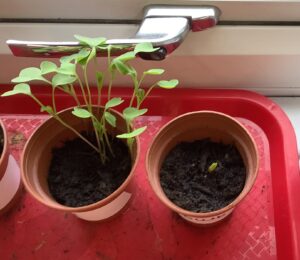
In the cold
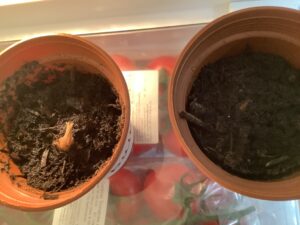
This comparative test shows that as well as water and sunlight, plants need a suitable temperature to grow healthily.
We’ve also been thinking about the benefits of wildlife and the importance of caring for wildlife.
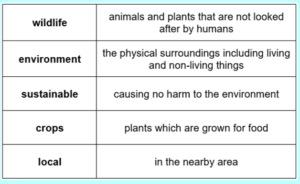
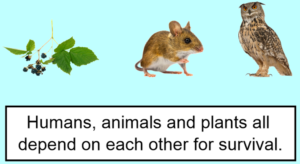
Here are some ideas we’ve been learning about to look after wildlife.

Look at this hedgehog house ready for visitors!
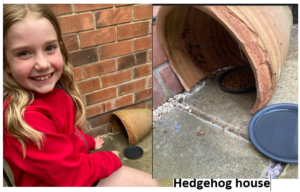
Help at home: ask your child for some ideas for helping wildlife in the local area.
Living and Learning: physical health and fitness
Our latest Living and Learning sessions have been all about the importance of physical activity and how we need to keep active to keep our bodies and our minds healthy.
The NHS guidance states that children and young people should ‘aim for an average of at least 60 minutes (30 minutes in school and 30 minutes out of school) of moderate or vigorous intensity physical activity a day across the week’.
We know that the exercise we need to do to achieve this, should increase our heart rate, make us breathe harder and make us feel warmer.
We thought about how we manage to achieve our active 30 minutes during the school day.
Wake Up Shake Up
PE sessions
running, skipping and playing tig at playtimes
playing in the MUGA at lunchtime play
Go Noodle, Supermovers and active counting in class
jogging around the playground for brain breaks
Then, we shared ideas as to how we achieve the 30 active minutes outside of school.
travelling to and from school in an active way
after-school physical activity clubs
practising gymnastics
dancing
playing football
going for a jog
going on a bike ride
swimming
martial arts
boxing
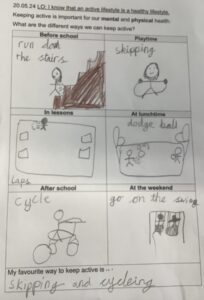
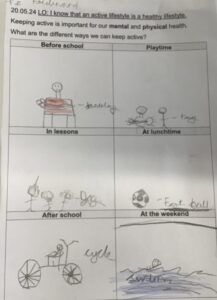
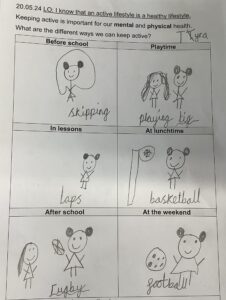
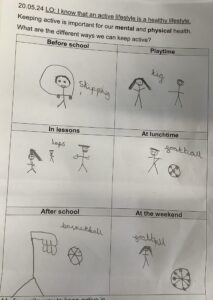
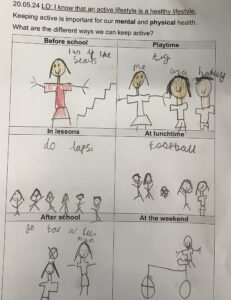
Help at home – try a new physical activity out of school. Use our physical activity guide for some ideas. Encourage your child to practise some skipping ready for our skipping festival (skipping ropes are available to buy from class for £3).
Amazing Africa!
In Geography lessons, over the last few weeks, Year 2 have learnt lots about about Kenya in Africa. We have looked closely at the similarities and differences between Kenya and England and Nairobi and Leeds.

The children were able to name physical and human geography in both Nairobi and Leeds.
In writing, we have looked at features of reports and planned our own report about Nairobi. Next week, we will write our reports all about Kenya and Nairobi.



Help at home by asking your child some facts about Nairobi.
Can they name some features of a report?
Living and Learning: healthy eating
Our latest Living and Learning theme has been all about healthy eating.
This video helps to explain the importance of healthy eating as part of living healthily.
First of all, we thought about the 5 a day message. Having at least 5 (ideally different) portions of fruit and vegetables keeps us healthy. These could be different types of fruit and vegetables.
 A portion is about a handful.
A portion is about a handful.
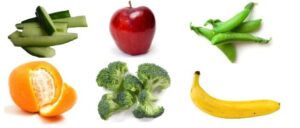
Here are some tips for achieving your 5 a day.
You could have some banana on your cereal.
If you put some cucumber in your sandwich, that would be an extra portion.
You could add some sweetcorn or peas to your pasta for tea.
Have some fruit or vegetable sticks when you get home from school.
The Eatwell Guide is a key document to show how much of what we eat overall should come from each food group to achieve a healthy, balanced diet. The bigger the section the more food from that group we should eat. The balance of foods from each group does not need to be achieved with every meal but we should aim for the balance over a day or even a week. Here we are sorting foods into the different food groups.
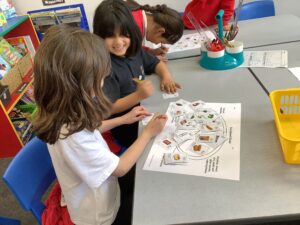
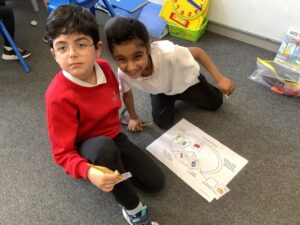
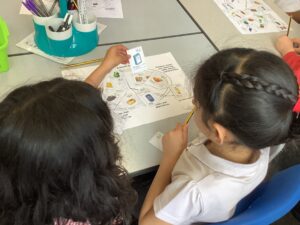
We used the Eatwell Guide as part of our reading fluency text too.

Help at home look at the Eatwell guide together and think about any improvements that could be made. This may be having an extra vegetable a day, trying a new fruit or vegetable, switching to brown bread or pasta or having a healthier snack after school. There is currently the Just One More campaign running in Leeds to encourage people to eat Just One More portion of vegetables every day.
More healthy eating ideas can be found by signing up to these Healthy Steps emails from Better Health (formally Change4Life).
Foot-Tech Euros festival of football
As part of our North East Leeds Well School Partnership, twelve Year 2 pupils took part in the Foot-Tech Key Stage 1 festival of football at John Smeaton.
It was an action packed morning and the children gave 100% to all the different football activities. They looked super smart in our new KS1 sports tops too.
I loved it!
Foot-Tech all did a great job.
I liked the 3 v 3 games.
I really liked it because of all the competitions.
People were trying their hardest.
I liked playing with the other children.
I practised lots of football skills.
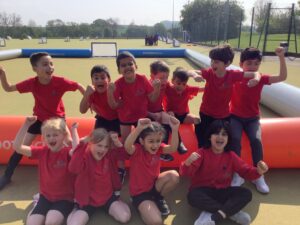








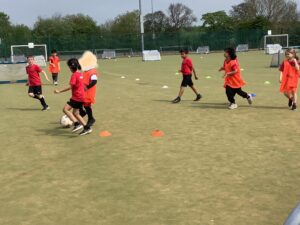
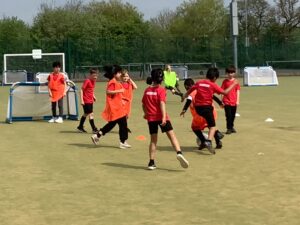

Foot-Tech run children’s football training locally. Click here to find out more.
Living and Learning: health and prevention
Over the last two weeks, Year 2 have been learning about keeping our bodies healthy.
Firstly, we considered good hygiene. Most microbes do not harm us and some are actually very helpful. However, some microbes can harm us and these are called germs.

We can’t get rid of every single germ but we can think about how to keep them away and stop them from spreading.

Good handwashing is a key part of being hygienic. We reminded ourselves of how to wash our hands properly.

We already use an important technique to stop germs spreading by covering our mouth and nose with the inside of our elbow (the vampire technique).
We also discussed the importance of sleep in our weekly circle time.
All of the children could give a good example of why sleep is important from helping our memory to helping us grow.
This website provides more information about the importance of sleep for children.
Dental health is another key aspect of being healthy.
We thought about teeth-friendly food and drink, how to keep our teeth clean and to understand how our adults and dentists help to keep our teeth healthy.
- For children under 7 years, a pea-sized amount of toothpaste is recommended and brushing should be supervised.
- Children should be encouraged to spit out after brushing rather than rinsing with water, so that the fluoride remains on the teeth.
- It is recommended that water and plain milk are drunk.
- Children aged 5-7 years should visit their dentist for a regular check-up (every 6 months)
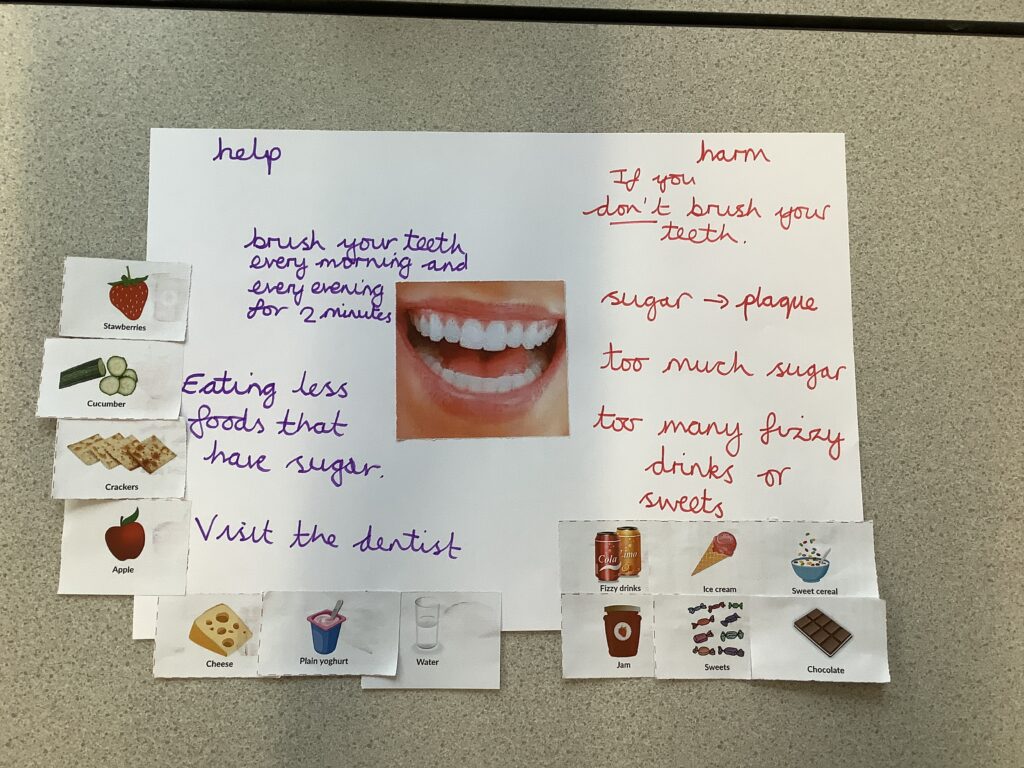

Help at home: sleep, dental health and good hygiene are all important aspects of keeping healthy. Discuss with your child which of these they want to improve and the steps to do this.
Summer term after-school clubs
***Update***
The following clubs have availability and there is still time to sign up.
The after-school clubs for this term are available for booking from this Wednesday. We hope your child/children can get involved with our extra-curricular activities.
This term, clubs will run for 10 weeks rather than 8 weeks starting week commencing 29th April.
Please contact the office if you have any queries about the after-school clubs.

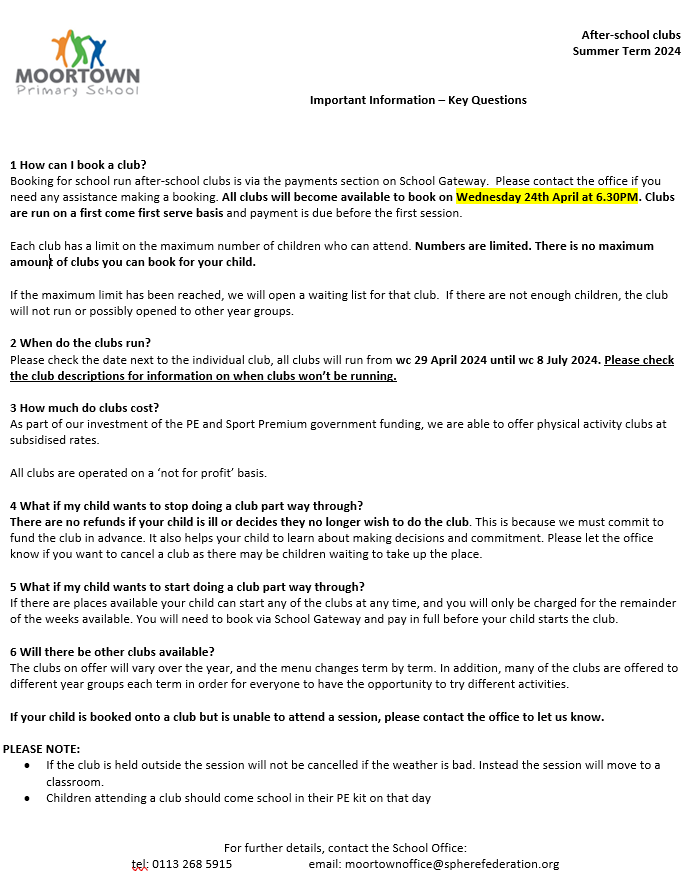
Geography Topic – Explorers
This half-term, in Year 2, we are being geographers. This week we have been learning the names of the seven continents and five oceans. The children have enjoyed learning two songs to help them remember. We have also enjoyed exploring google earth and looking at a globe.
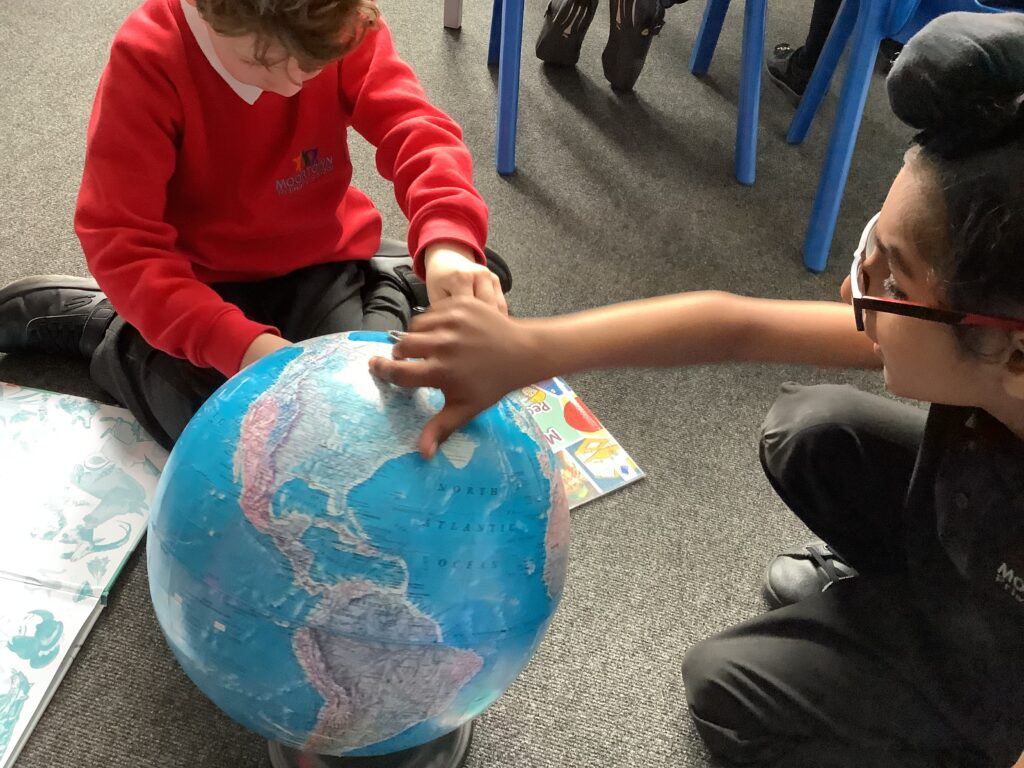
How can you help?
Google Earth is a brilliant tool to help develop children’s understanding of space, place, scale and interdependence. Zoom right in on your home and then zoom out to reveal the area of Leeds that you live in. Zoom further out to see what city you live. Zoom further for the county. A little further and you might start to spot some national parks. Further still and you can see the country that we live in. Keep zooming and you’ll see the continent we live in (though this isn’t labelled).
Quizzing your children about some locational knowledge will help them to remember important information.
- Which continent do we live in?
- Which country do we live in?
- In which hemisphere is our country located?
- Which county do we live in?
- Which city do we live in?
- Which part of Leeds do we live in?
- Which four countries make up the United Kingdom?
Class novel – The Worst Witch
In Year 2, over the next few weeks, we will be reading The Worst Witch, by Jill Murphy. We will link reading and writing learning with it too, as well as enjoying immersing ourselves in the story. We already love Mildred and her cat!
Help at home by talking about what has happened so far.
Science: biology
This half term, we are starting our science learning as biologists. We return to learning about plants (including bulbs and seeds) and what they need to survive.
Here is the vocabulary we are learning.

First of all, we investigated different seeds and bulbs. We used hand lenses to observe them closely. We thought about how the seeds and bulbs were the same and different and used this to group them.





Help at home: have a look at foods at home. Are they grown from a seed or a bulb?
